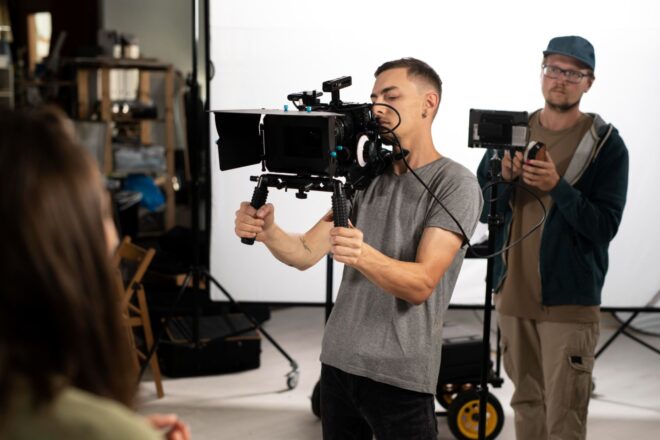
Visuals play a pivotal role in conveying emotions, setting the tone, and capturing the audience’s attention. When it comes to short films, where every frame counts, creating visually striking shots becomes even more crucial. In this post, we’ll explore seven ways to elevate your short film’s visual appeal and leave a lasting impression on your audience.
1. Master the Basics: Composition and Framing
Before delving into advanced techniques, it’s essential to grasp the fundamentals of composition and framing. The rule of thirds, leading lines, and symmetry are your best friends. Experiment with various framing techniques to find the most compelling way to tell your story. A well-composed shot not only captivates the viewer but also serves as a solid foundation for more intricate visual elements.
2. Harness the Power of Lighting: Natural and Artificial
Lighting is a cinematographer’s secret weapon. Explore the nuances of natural light to create cinematic atmospheres, especially during the golden hour for stunning, warm tones. When natural light is limited, master the art of artificial lighting to evoke mood and highlight essential elements. Experiment with shadows and silhouettes to add depth and intrigue to your short film’s visuals.
3. Color Grading Magic: Set the Mood with Color
Color grading is a powerful tool that can transform the entire mood of your short film. Experiment with different color schemes to evoke specific emotions – warm tones for intimacy, cool tones for melancholy, or high-contrast black and white for drama. Consistent color grading throughout your film helps create a visually cohesive and memorable viewing experience.
4. Dynamic Camera Movement: Elevate the Action
Static shots have their place, but incorporating dynamic camera movements adds a layer of excitement and engagement. Experiment with techniques like tracking shots, crane shots, and dolly movements to bring your short film to life. Just ensure that the camera movements serve the narrative and don’t distract from the story you’re telling.
5. Utilize Unique Perspectives: Break the Mold
Challenge conventional perspectives to create visually striking shots. Experiment with low or high angles, bird’s-eye views, and point-of-view shots to provide a fresh and unique visual experience. These unconventional perspectives can draw attention to specific details or immerse the audience in the character’s point of view, enhancing the overall impact of your short film.
6. Visual Effects: Enhance, Don’t Overwhelm
Incorporating visual effects can take your short film to the next level, but it’s crucial to use them judiciously. Whether it’s subtle enhancements or breathtaking CGI, make sure the visual effects seamlessly integrate with the story. Overwhelming the audience with flashy effects can detract from the narrative and dilute the impact of your film.
7. Sound and Silence: The Power of Audio in Visual Storytelling
While not a visual element per se, sound and silence are integral to the overall visual experience. Thoughtful sound design and a well-curated soundtrack can elevate emotions, create tension, and enhance the impact of your shots. Don’t underestimate the power of silence either – strategically using moments of quiet can amplify the impact of key scenes.
Conclusion
Creating visually striking shots for a short film is a delicate dance between technical prowess and artistic expression. Mastering composition, lighting, color grading, camera movement, unique perspectives, visual effects, and the power of audio will empower you to craft a visually compelling narrative that resonates with your audience. As you embark on your filmmaking journey, remember that each shot is an opportunity to tell a story visually – make every frame count.